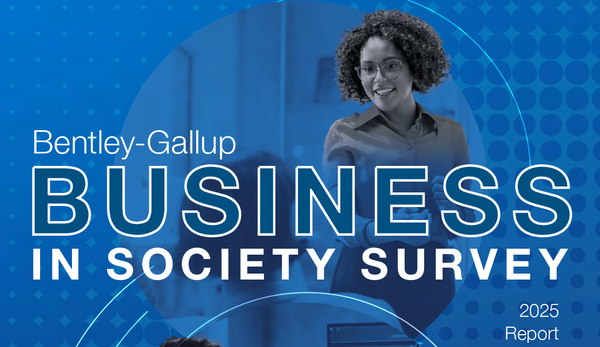The Strategic Pivot: How Mid-Career Professionals Can Enter the Booming ESG and Social Impact Sector in 2025

The sustainability and social impact sector is undergoing a massive transformation—and it’s opening the door for professionals who want purpose-driven careers. According to LinkedIn’s 2024 analysis, demand for green-skilled talent grew by about 11.6% year-over-year, while supply only increased by 5.6%. These are LinkedIn dataset estimates, but they underscore the widening gap between corporate sustainability commitments and the workforce prepared to deliver.
For Bay Area professionals—and others across the globe—this moment represents a powerful opportunity. With climate regulations tightening, such as the EU’s Corporate Sustainability Reporting Directive (CSRD) (first cohort reports covering FY2024 are due in 2025, with phased expansion in later years), companies urgently need talent that can meet regulatory and investor expectations. Even with recent proposals to simplify CSRD requirements, the direction of travel is clear: ESG skills are no longer optional.
At FYP, we see this not just as a labor trend, but as a movement—people aligning their skills and careers with meaningful work. Here’s how mid-career professionals can pivot into the ESG and impact economy in 2025.
I. Credentialing: The New Career Currency
Your resume may not scream “sustainability,” but the right credentials can. Certifications translate established expertise into the ESG language companies and regulators require.
Leading options in 2025 include:
- Certified ESG Analyst (CESGA 4.1): Marketed by EFFAS as aligned with the EU’s ESRS standards. While EFFAS highlights this as the “first accredited” credential, independent EFRAG confirmation is limited. Candidates should verify recognition with target employers.
- Sustainable Investing Certificate (SIC): Formerly the “Certificate in ESG Investing,” this CFA Institute program was rebranded in April 2025, with curriculum continuity. It is globally recognized in sustainable finance.
- FSA Credential (IFRS Foundation): Focused on linking sustainability information with enterprise value and financial disclosure, this credential positions professionals at the core of reporting compliance.
These certifications provide credibility, technical grounding, and proof of commitment to the field.
II. Transferable Skills: Turning Experience into Green Value
Mid-career professionals already hold in-demand capabilities—what’s needed is reframing them as green skills:
- Data Analysis & Reporting: For emissions tracking and ESG disclosures.
- Project Management: To drive net-zero strategies, renewables projects, or efficiency rollouts.
- Stakeholder Engagement: To align sustainability goals across departments and with regulators.
Frameworks like those from the ISSB, GRI, and professional associations can help professionals re-map their business expertise into ESG competencies. For instance, a finance leader can emphasize governance oversight, risk management, and ESG-linked reporting.
III. Experiential Proof: Skills-Based Volunteering
Simply listing nonprofit service on a resume is no longer enough. The highest-value pivots now come from skills-based pro bono work that produces measurable outcomes.
Examples:
- An IT manager modernizing a nonprofit’s emissions-tracking system.
- A legal advisor guiding a charity through compliance.
- An operations professional helping a local nonprofit reduce waste by 20%.
Document these projects like paid consulting—quantify results, highlight outcomes, and integrate them into your professional portfolio.
IV. The High-Impact Application Toolkit
To land ESG roles, applications must directly reinforce the pivot narrative:
- Resumes: Focus on quantified, sustainability-relevant achievements. Place skills-based projects in the main Work Experience section.
- Cover Letters: Frame the shift as strategic, citing certifications, pro bono projects, and alignment with the company’s sustainability reports or goals.
- Company Research: Reference disclosures like CSRD, GRI, or SASB reports to tailor applications.
This reframes you not as an outsider, but as a professional bridging proven business skills with ESG priorities.
V. LinkedIn: Adopting the “Conference Mindset”
At FYP, we think of LinkedIn as a digital industry conference. The most effective candidates in 2025 are those who:
- Engage daily with relevant ESG posts before publishing their own insights.
- Share short, practical analyses of new policies, disclosure rules, or sustainability trends.
- Conduct informational interviews to access the “hidden job market.”
Done consistently, this builds authority, visibility, and valuable professional relationships.
Our Take
This is bigger than a career transition, it’s a realignment of work with values. The ESG and social impact talent gap is real, but so is the opportunity.
By pairing credentials with reframed experience, proving impact through skills-based volunteering, and building digital authority, mid-career professionals can transform into exactly the kind of leaders companies and communities need.
2025 isn’t just another year—it’s a turning point. For those ready to pivot, it could be the year they truly find their purpose, place, people, and path in the impact economy.




